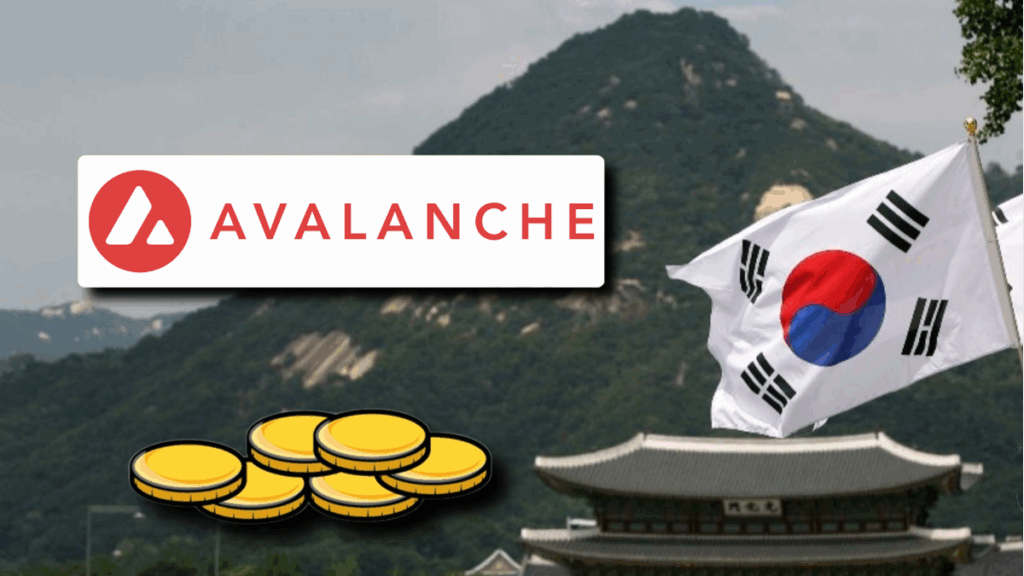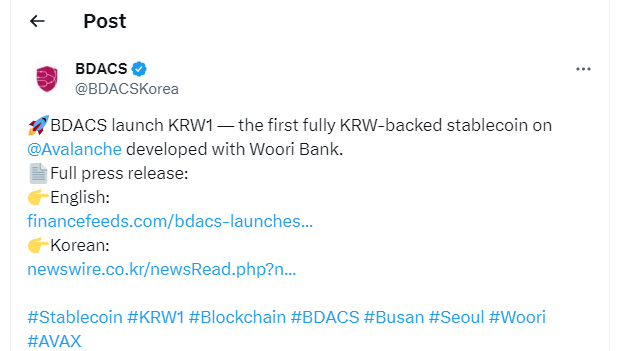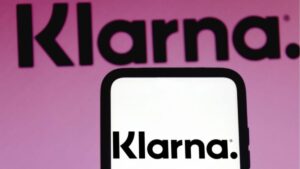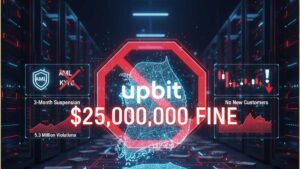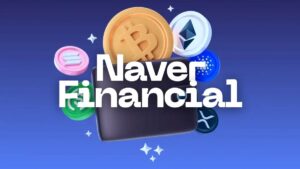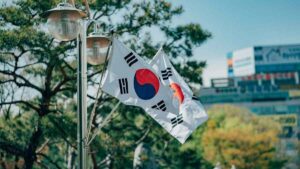TL;DR
- South Korea’s BDACS has unveiled KRW1, the country’s first stablecoin fully backed by the won, running on the Avalanche blockchain.
- The launch is currently a proof of concept and is not yet publicly available, ensuring compliance with evolving local regulations.
- KRW1 integrates real-time banking APIs with Woori Bank, providing transparent proof of reserves and laying the groundwork for cross-chain expansion and future public-sector use.
South Korea’s pioneering crypto custody provider BDACS has introduced KRW1, a stablecoin pegged to the South Korean won, built on Avalanche’s secure and scalable network. The project remains in a proof-of-concept phase and is not yet in public circulation as South Korea continues to clarify its stablecoin regulations. The launch demonstrates the firm’s commitment to combining traditional finance with cutting-edge blockchain technology to promote trust and reliability.
BDACS highlighted that KRW1 is fully collateralized with funds held at Woori Bank, one of the country’s largest financial institutions. Real-time banking API integration ensures transparency and verifiable proof of reserves, which the company views as essential for institutional adoption. The system also allows monitoring of liquidity levels and instant reconciliation, supporting both retail and enterprise use cases.
Technical Reliability And Network Advantages
The selection of Avalanche as KRW1’s network was based on its strong performance in public-sector projects and robust security measures. BDACS has also developed a comprehensive ecosystem around the token, including issuance and management systems, as well as a user-friendly app supporting peer-to-peer transfers and transaction verification. The company emphasized its rigorous testing protocols and collaboration with blockchain security auditors to ensure technical soundness.
Global Ambitions And Strategic Positioning
Although still in PoC stage, BDACS aims to make KRW1 a stablecoin for global payments, remittances, deposits, and investments. The company is also exploring deployment in public-sector applications, such as emergency relief settlements, and is planning future expansion to other blockchains for improved interoperability. Collaborations with established dollar-pegged stablecoins like USDT and USDC are also under consideration. BDACS sees this as an opportunity to attract international partnerships and integrate into broader financial ecosystems.
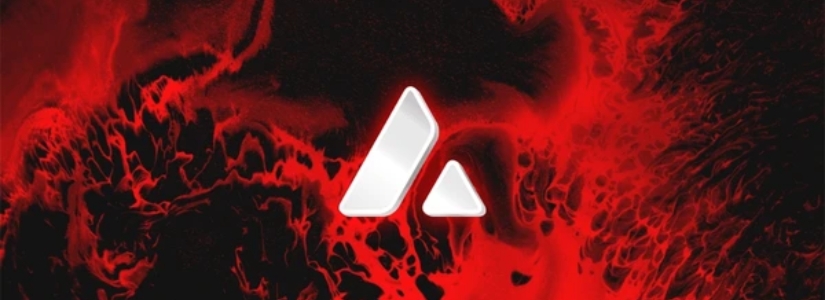
South Korea’s regulatory environment remains uncertain. While President Lee Jae Myung encourages local currency-backed stablecoins to enhance monetary sovereignty, the central bank has emphasized that issuance should be limited to licensed banks. BDACS sees this environment as an opportunity to establish itself as a key player before major tech companies enter the market.
“KRW1 benefits from strong institutional support and strategic blockchain partnerships, providing depth and security that larger tech firms alone cannot achieve,”
BDACS stated, emphasizing collaboration over competition.


